| I was given a blank canvas of a room when I took on the position of an autism teacher. A joy to most educators … anxiety inducing for me. Where should I start? Especially having not met my students and having been given no information on them. They were to come from around the area to my new autism classroom. I might add that I had to purchase furniture for a room that had yet to be built. Leading a new team, only one of which I had worked with before was also in itself daunting – a post for another time.
So what I show you today took me a while to get there. In fact, it’s taken me a good 2 years to get our autism classroom setup how the students need it. It’s been a LOT of trial and error and figuring it out along the way. It will never stop evolving – we must always continue adapting it to meet individual needs of our autistic learners. |

Pin me to find me later! |
Autism classroom setup
I thought sharing where we are currently, might be of use to someone starting out or looking for a new layout for their autism classroom. Some of the ideas and autism strategies shown do not originate from my own head. They have however been adapted to meet the needs of the class. I have also come across some good books on how to setup a classroom for autistic learners:
 |
 |
Class Rules
We have 6 class rules. Six simple visuals. We use the first 6 weeks in our autism classroom reminding the students and ensuring these rules are understood. We display these on a main bulletin board, the students can see this at all times during group learning. Our rules are: listen, look, quiet, good hands ( no hitting or touching others), good feet ( no kicking) and sitting on chair.
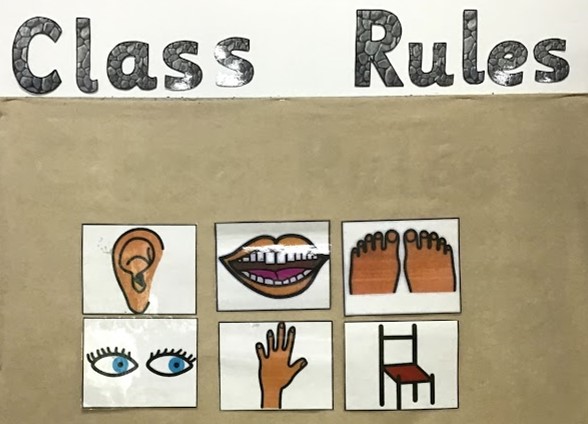
The images use hook and loop tape so I can take them off and show to the autistic learners as I teach. We also have them on our lanyards so we can refer to them throughout the day, regardless of what we are doing or where we are with the class and students.
Visual work schedule
In addition to the standard visual timetable that is essential for the autism classroom we use a visual work schedule board. We use this symbol on our board to show the children that they need to refer to this board.

The board is set up so each child has their own strip. Above this we place their picture (I have pixelated them out on this photo). Below their picture we use digital timers, this is so they know how much time they have on choosing before we ask them to work again. We give them ten minutes for choosing. For our students this is just the right length of time to be left to occupy themselves independently.
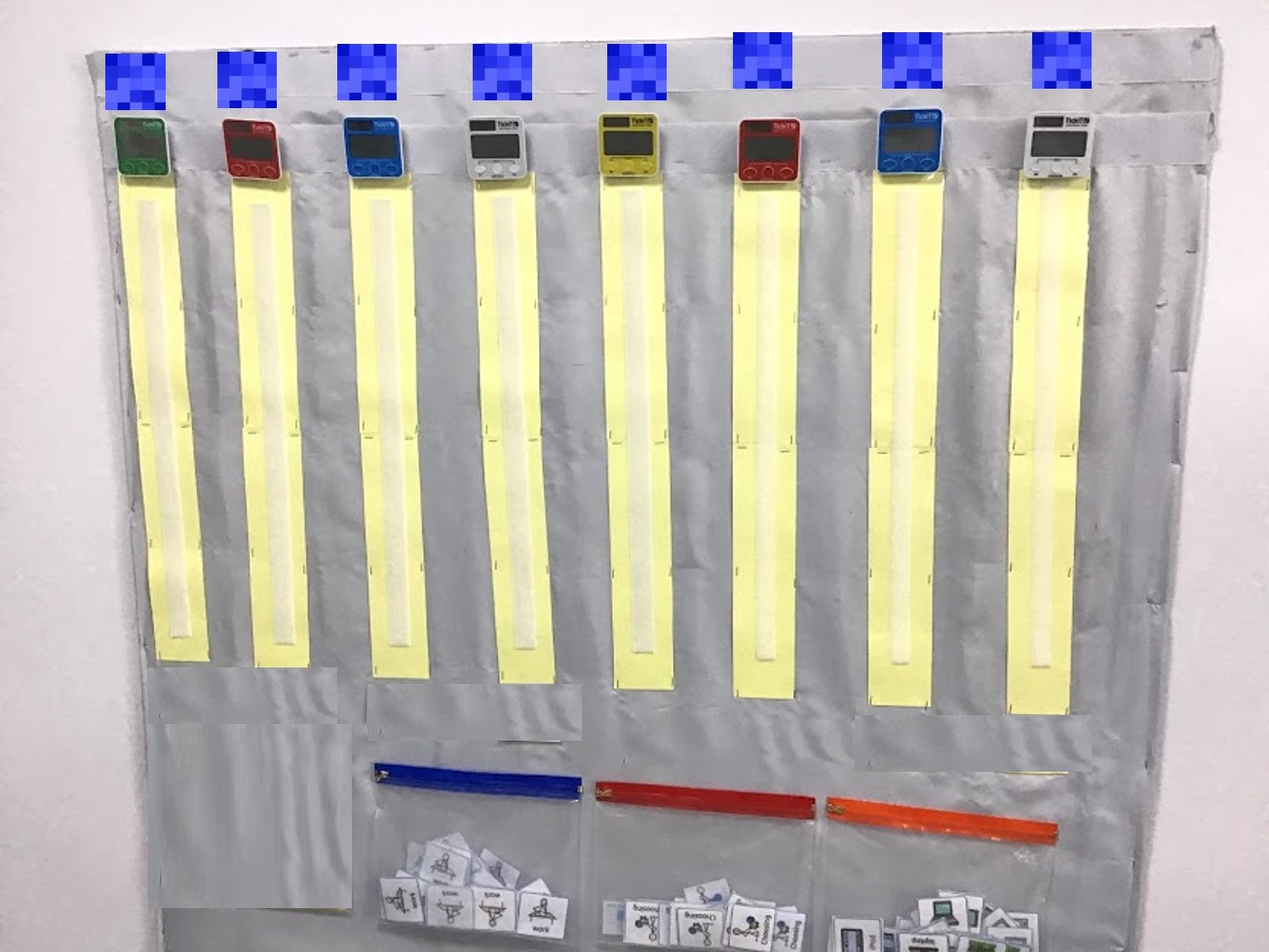
During each hourly session the children complete two pieces of work and two choosing before they have free time on technology. However, we adjust this based on the needs of the child, for example in the image below we have three pieces of work.
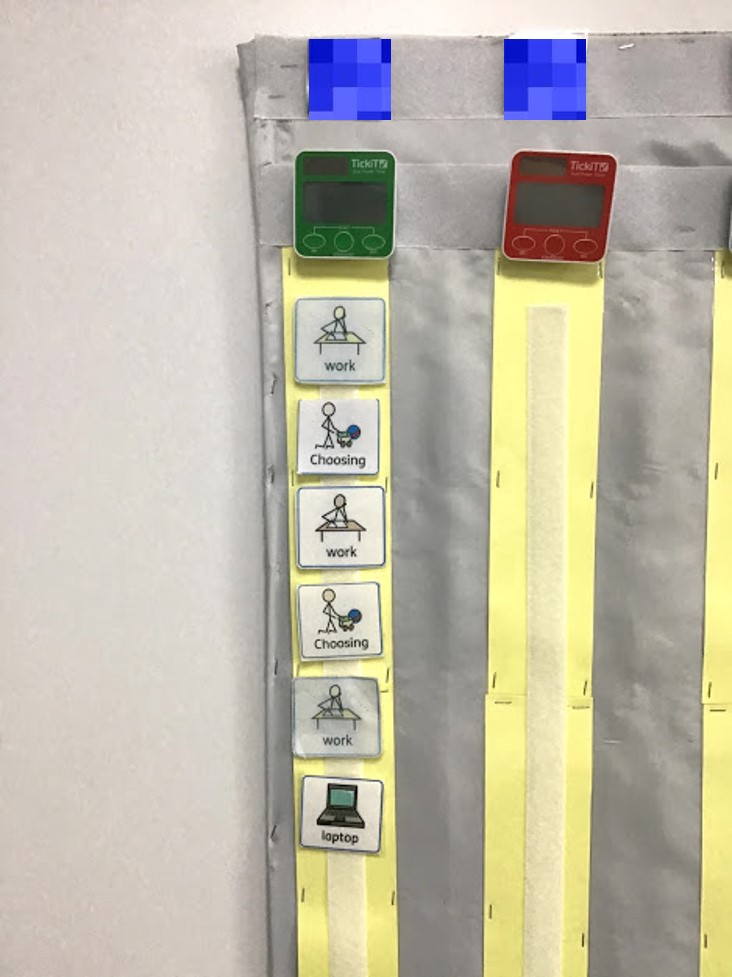
Zones of regulation area
I will write a review on the zones of regulation and how we use it in an autism classroom at a later date. For now, I am just showing you the area we have setup. Our zones area is regularly in use and is so helpful in allowing the children to identify their emotions and solve their problems. This area is combined with lessons around the zones of regulation. If you wish to do this in your autism classroom setup for your students to emotionally regulate I strongly encourage you to purchase the curriculum. You will need to take the children through it, that way they will truly understand how to use the area. We store the children’s zone of regulation portfolios here so we can refer to them throughout the day if they are having challenges with emotional regulation.
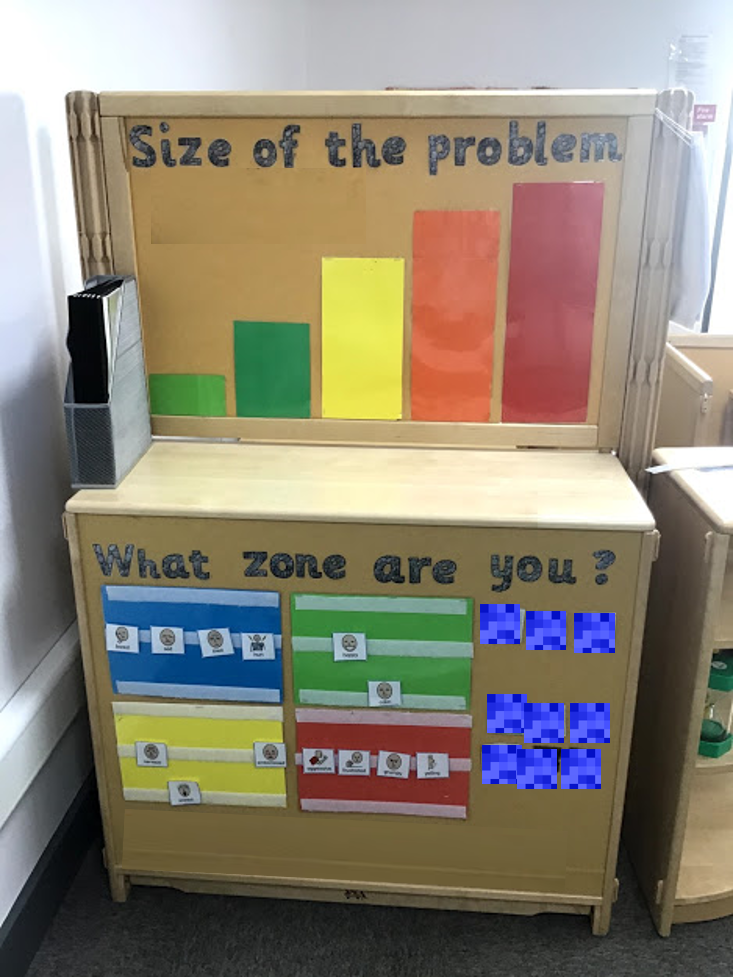
Reward chart
As well as children enjoying working towards free choice time after their work schedule we also have a reward chart in our autism classroom setup. My students love this! The children receive stars for following class rules, sharing, accomplishing something difficult. When they reach 10 stars they receive a treat, sourced from my local community. Members of the local community have donated McDonald type toys, small action figures etc. Occasionally, I top up with a few party favor toys from amazon.com.

Again, each student has their own strip with their picture next to it (pixelated for the purposes of this blog post). Not shown, is the bag of star tokens that the children get their stars from and put them back in once they reach 10. The tokens are NEVER taken away for challenging behaviour. The strip is only reset once they reach 10, therefore if they have 5 on a Friday they start on Monday with 5.
Movement breakout area
Our autistic children will take movement breaks as and when they need it. We encourage this throughout the day. It supports their sensory needs and helps to reduce challenging behaviours and meltdowns. We have a corner with a trampette, peanut and yoga ball. They can also walk and stim if needed.
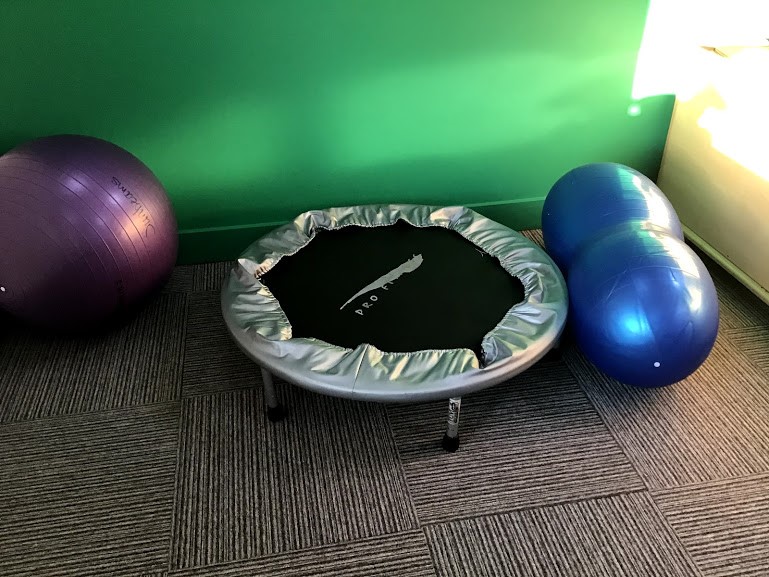
Book area
In an autism classroom setup it is important to include a book area. It helps promote reading and it acts as a quiet, safe space to retreat to. You may notice that I am missing the cushions on the sofa. The children take them off and prefer to sit on the wooden board underneath! It is a sensory thing. The staff and I have spent a lot of time putting them on and the students taking them off. In the end we let them win – in an autistic classroom you have to pick your battles. If they prefer to sit this way, I am more than happy to make this reasonable adjustment. So for now, the cushions remain behind the sofa – not on it.

Work areas
In my autism classroom I have a variety of work areas. I have the workstations, stand alone tables and group areas. These work areas offer us and the students flexibility, essential when setting up an autism learning resource base.
 |
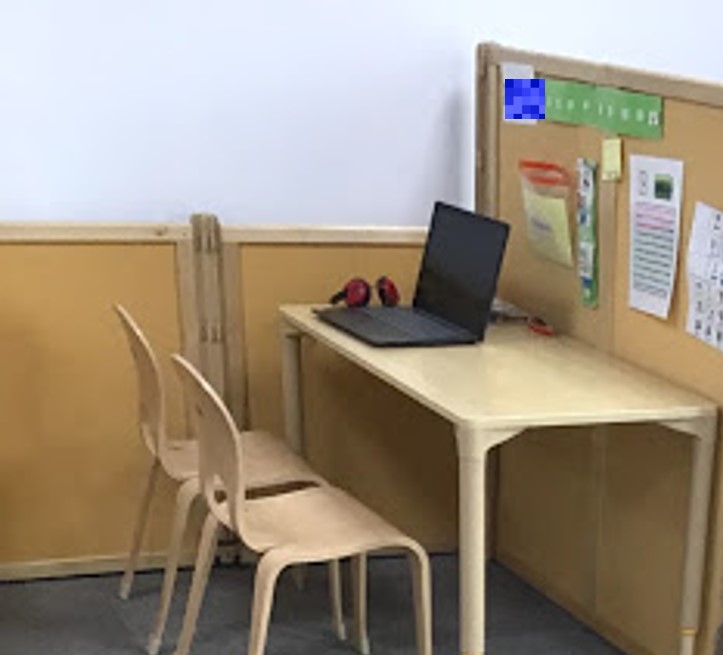 |
 |
So there we are! That is my autism classroom setup. I hope you found this post both informative and useful. I know when I was starting out I looked to the autism educator community for inspiration. I’ve gathered some resources that you may be interested in – click on the pictures to find out more:
 |
 |
 |
 |
 |
If you have any questions or want any support in setting up your class please stop by my facebook page and ask me! I am always happy to help.
